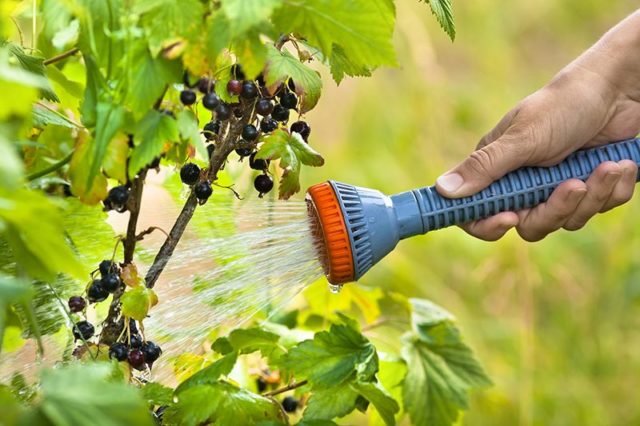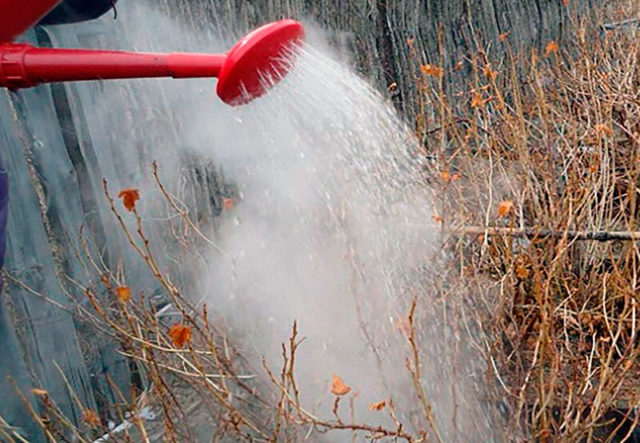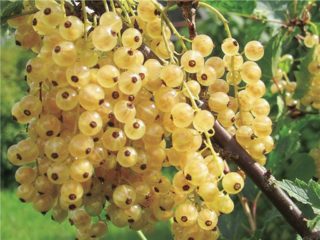Content
Watering berry bushes, including currants, plays a huge role in obtaining a harvest. The root system of these plants is located close to the soil surface and does not have the ability to absorb moisture from deeper horizons. Therefore, you need to water currants regularly, but to achieve maximum efficiency, watering must be done in compliance with certain rules.
Features of watering currants
Currants love moist soil and are considered a moisture-loving plant. Lack of moisture in the soil negatively affects its general condition. A lack of water causes currant leaves to curl and the berries to become smaller and dry. The growth of the bush slows down, young shoots do not ripen. A particularly severe drought can even lead to the death of a currant bush.
However, you cannot water blackcurrants too often. Excess water in the soil can cause considerable damage to the bush. Stagnation of fluid in the roots can lead to their rotting; in conditions of high humidity, pathogenic bacteria and fungi intensively develop, which provokes the appearance of various diseases.The normal soil moisture level for currants is 60%.
How often should you water currants?
In many cases, precipitation is sufficient for currants. This is especially true in regions with a cool climate, where the soil dries out relatively infrequently. In this case, there is no need to additionally moisten the soil.
How to water currants in summer
In summer, the need to water currants is determined by the weather and the amount of rain. During dry periods, you need to moisten the soil under the bushes once a week. You need to especially carefully monitor the condition of the soil during the period of setting and ripening berries. A lack of water in the soil at this time can lead to the fact that fruits that have not yet ripened begin to fall off. This means that the bush turns on a natural regulation mechanism, getting rid of part of the crop, the ripening of which requires a lot of moisture. This is done to maintain water balance in other parts of the plant to avoid its death. Thus, the dropping of berries is a clear sign of a lack of moisture in the soil.
If there is insufficient precipitation, currant bushes need watering even after harvesting. Maintaining moisture in the soil at this time allows the shrub to quickly regain strength, especially if fruiting was abundant. In addition, after fruiting is completed, new flower buds begin to form on the currants, which will become the basis of next year’s harvest.
Spring watering of currants
The very first watering of currant bushes in the spring is recommended to be done before the beginning of the growing season, when the buds are still dormant.This is usually the end of March, at which time in most regions the ground is already free of snow. Watering is carried out by sprinkling, and the water should be hot, about + 70-75 ° C. To enhance the disinfecting effect, you can add several crystals of potassium permanganate to the water.
For watering, use a regular watering can, with which you evenly irrigate the currant bushes. This measure has a beneficial effect on the shrub because it performs the following functions.
- Kills fungal spores that cause powdery mildew and other diseases.
- Kills the larvae of insect pests that overwintered on the bush, primarily the currant mite.
- Hot water promotes rapid thawing of the soil in the root zone, which allows the plant to begin its growing season earlier. It should be taken into account that there should be no return frosts.
Useful video on how to properly water currants with boiling water in spring:
Currant bushes may need repeated spring watering at the end of spring, during the formation of flower ovaries. By this time, the moisture accumulated in the soil after the snow melted has already been used up or evaporated. If the winter had little snow, and the spring was warm and dry, then watering is definitely necessary. Otherwise, you need to be guided by the condition of the soil; it may well turn out that there is enough water in it, in which case it is better to refuse additional moisture.
Watering currants in autumn
In autumn, currant growth slows down. With a decrease in average daily temperatures, the evaporation of water decreases, both from the leaves of the bush and from the soil. In the vast majority of cases, there is enough precipitation at this time of year, and additional watering is usually unnecessary.However, in late autumn, before the onset of cold weather, at the end of October or beginning of November, it is necessary to carry out the so-called “moisture-charging” watering of currants. It is done to ensure that all plant tissues are saturated with moisture; this significantly improves the winter hardiness of the shrub and reduces the likelihood of it freezing in winter.
How to water currants correctly
To water currant bushes in spring and summer, you can choose any of three methods:
- Watering the trench.
- Sprinkling.
- Drip irrigation.
The first method is to build a small trench or groove around the bush. Its diameter should be approximately equal to the projection of the crown. To prevent its walls from crumbling, they are reinforced with stones. During watering, the groove is filled to the top with water, which is gradually absorbed and moisturizes the entire root zone. Often the ditch is covered from above, preventing debris from entering it and preventing the evaporation of moisture.
Sprinkling is the simplest way to water currant bushes, but no less effective. This shrub responds well to irrigation of the crown; a water shower washes away dust from the leaves and helps to activate photosynthesis processes. For sprinkling, use a watering can or hose with a spray nozzle. This procedure should be carried out in the evening so that water drops do not focus the sun's rays and cause leaf burns. It is better to use settled and warm water.
Drip irrigation began to be used for watering currant bushes relatively recently. Setting up such a system requires quite a lot of money, but it allows for significant water savings, which is very important for regions or areas experiencing water shortages.
Is it possible to water currants during flowering?
Flowering currants do not need to be watered. An exception can be made only if the spring was early and dry. If there is a lack of moisture in the soil, flower ovaries may begin to crumble. Watering during this period should be done only by the root method, with warm water.
Some gardeners at this time only spray the bushes with honey solution (1 teaspoon of honey per 1 liter of water). This is done to attract flying insects, which are pollinators for currant flowers. Thanks to this, flower ovaries fall off less and yield increases.
Advice from experienced gardeners
Currants have been cultivated in Russia for a very long time, so lovers of growing berry bushes in their garden plots have accumulated a lot of experience working with this crop. Here are some recommendations that experienced gardeners are advised to follow when watering:
- To determine the amount of water that needs to be used to water the currant bush, you should make a hole in the ground on the bayonet of a shovel. If the top soil layer has dried out less than 5 cm, then there is no need to additionally moisten the soil. If the soil has dried out by 10 cm, then it is recommended to use 20 liters of water for irrigation for each bush, if by 15 cm, then 40 liters.
- After watering, the root zone should be mulched. Mulch retains moisture well in the soil, thanks to it there are no sharp temperature fluctuations in the root zone. In addition, mulching additionally enriches the soil with nutrients.Peat, humus, straw or hay, and sawdust can be used as mulch. It must be remembered that the thickness of the mulching layer should be small so as not to disturb the air exchange of the root layer of the soil. For example, if dense peat or humus is used as mulch, then the mulch layer should be no more than 5 cm for sandy soils and no more than 3 cm for clay soils.
- It is better to collect water for irrigation in advance in barrels or other containers. Then she will have time to warm up.
- Sprinkler irrigation should be carried out either early in the morning or late in the evening. The bushes must dry out before being exposed to direct sunlight, otherwise there is a high risk of the leaves getting sunburned.
- It is very convenient to apply mineral fertilizers into a ditch dug around the bush for watering. This way they won't be washed away by the rain.
- In late autumn, before water-replenishing watering, the soil in the root zone of currant bushes needs to be dug up. This way the moisture will be better retained in the soil. The mulch layer needs to be removed for the winter, as this will freeze the ground more. This will kill parasites overwintering in the tree trunk.
Conclusion
To get a good harvest, you need to water the currants regularly, but always pay attention to weather conditions. In cold, damp weather, additional watering will do much more harm to the shrub than good, and in some cases can lead to disease and death of the plant. To avoid this, you need to constantly monitor the soil moisture and not allow it to dry out or become waterlogged.













